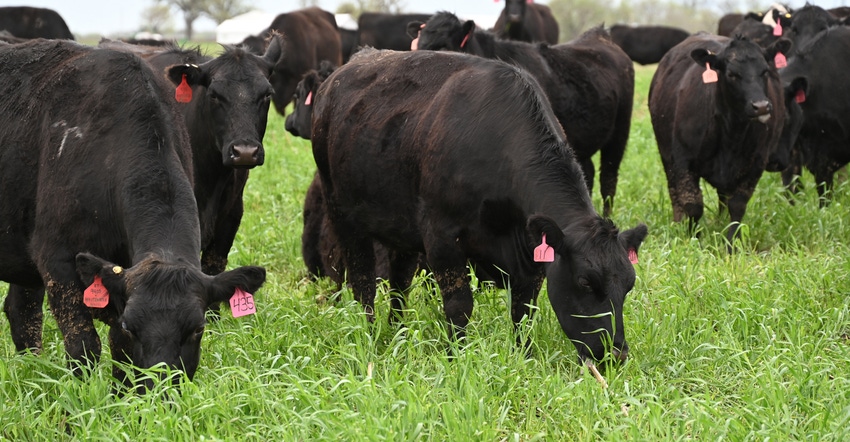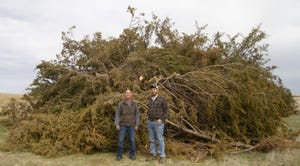Manage soil health while grazing cropland
Salute Soil Health: Keep the soil in mind while grazing livestock.
October 12, 2022

The practice of grazing cornstalks is far from new. Yet as land costs rise, farmers with cattle have a great opportunity to maximize use of their valuable land. Benefits of grazing cattle on cropland extend beyond having more cattle feed. Integrating cattle and cropland can also provide a much-needed boost to soil health.
Look at the value of extra feed first. Using some rough estimations, 1 acre of average Indiana corn will provide enough leaves and husks to feed one cow for six weeks, assuming the cow uses 50% of leaves and husks in the field. A month and a half of “free” feed sounds good vs. feeding valuable hay. With some additional investment in time, cover crop seed and management, you can extend that grazing window.
Cover crops flown into standing crops increase the quality and quantity of available feed following harvest. A popular grazing mix includes oats, turnips and cereal rye. The strategy is for oats and turnips to provide quick fall growth, while cereal rye provides grazing next spring.
Establishing cover crops
For future reference, successfully flying on cover crops requires opportune rainfall. For seeding into corn, at least 50% of the soil surface should be receiving direct sunlight at noon. During years where plants shut down early, this could be late August. With a late planting season, you may need to wait until mid-September to meet the 50% sunlight rule.
Tailor your cover crop mix for your seeding date. If you are unable to seed before Sept. 15, strongly consider removing winterkill species from mixes. When seeding into soybeans, 50% of soybean leaves should be yellow to ensure leaves drop soon enough to provide seedlings with light. If seedlings can “see the light,” they should be OK.
Grazing strategy
Strip-grazing can improve utilization of crop residues. When cattle are released in an open field, they will glean grain, leaves and husks first, grazing stalks and cobs last. Containing cattle to smaller strips gives them less area to glean the best and encourages them to consume some lesser-desirable residues. Additionally, this approach protects cattle health where excess grain remains after harvest. When used with cover crops, this will give growing plants a chance to recover and regrow. This recovery period is vital for winter-hardy species that are adapted to capitalize on spring growth.
Strip-grazing will help minimize soil compaction by reducing hoof traffic. Control access to wet spots. A goal of grazing crop residues should be to improve field conditions with manure. These benefits are negated if cattle compact the soil. Once forage and residue are depleted, get cattle off the field before it’s compacted, bare and vulnerable to erosion.
Cropland grazing benefits
With minimal investments in temporary fencing and water, expenses for feed, manure hauling, and building and equipment maintenance go down. Cropland grazing improves cattle health through exercise and getting them out of mud and confined lots. Soil health improves due to manure and cover crop living roots. Crop yields improve through quicker nutrient cycling and better residue management.
Always have alternative plans. Cover crop seedings can fail, and excess rainfall can degrade field conditions and reduce residue quality. Yet having cattle working on your land is a great way to improve your farming operation.
Nielsen is a district conservationist with the Natural Resources Conservation Service. This article is written on behalf of the Indiana Conservation Partnership.
You May Also Like
.png?width=300&auto=webp&quality=80&disable=upscale)


